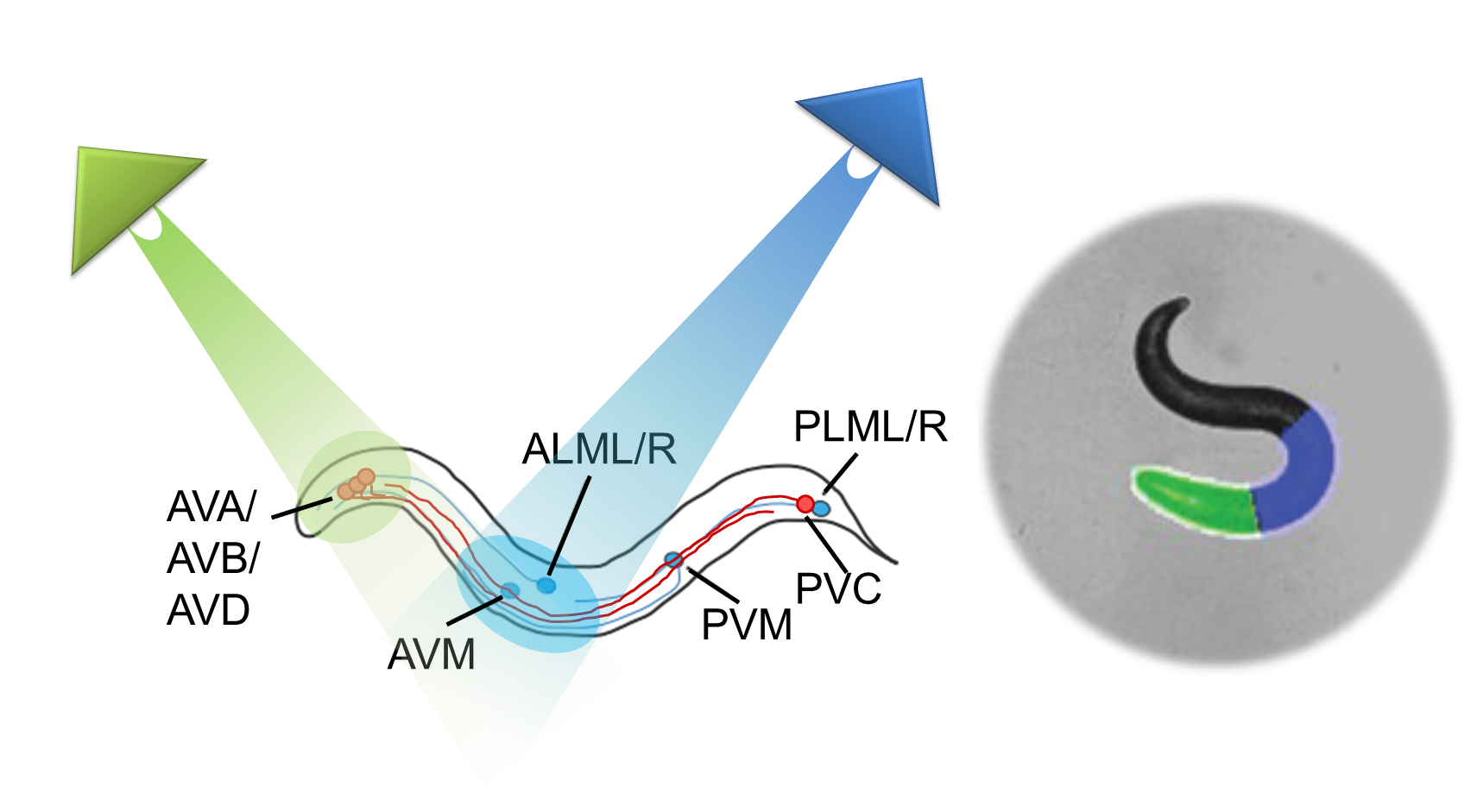Molecular Membrane Biology and Neurobiology

Welcome to our lab
We work in three main areas, in the context of molecular, cellular and behavioral neurobiology: 1) How neuronal activity evokes and modulates behavior, 2) mechanisms of chemical synaptic transmission, and 3) we are developing methods, particularly in optogenetics. Our model animal is the soil nematode Caenorhabditis elegans. We recently began to applying our methods in also zebrafish larvae.
1) To analyze neuronal networks and their involvement in behavior, we express optogenetic tools in defined neurons, or specifically photoactivate defined neurons, to evoke, inhibit or modulate the behavior controlled by these cells. This allows analyzing cell-autonomous function of genes needed in that cell.
2) Components of the machineries that mediate synaptic transmission, both on the pre-synaptic side (e.g. synaptic vesicle proteins), and on the post-synaptic side (e.g. proteins associated with neurotransmitter receptors) are analyzed by a combination of optogenetics, genetics, cell biology, electrophysiology and electron microscopy.
3) Optogenetic tools that we developed or implemented include rhodopsin-based actuators and inhibitors, light-driven enzymes for 2nd
messengers, photoactivated degrons and clostridial neurotoxins, and genetically encoded fluorescent indicators for Ca2+, cGMP and membrane voltage.
Webpages Gottschalk Lab
Research Group Dr. Christina Schüler
Projects: Characterization of catecholaminergic polymorphic ventricular tachycardia (CPVT) mutations and specific drug screen in the pharynx of C. elegans as an optogenetic arrhythmia model
Publications
Teaching
Teaching
Working in the lab
Working in the lab
ressources
ressources
Plasmid and Strains
in the media
in the media
Read articles about our working group in the public media:








